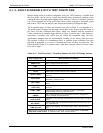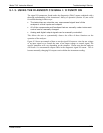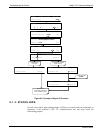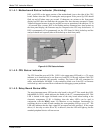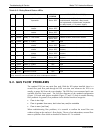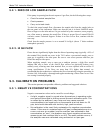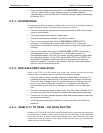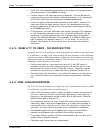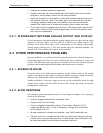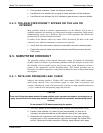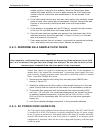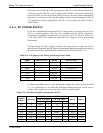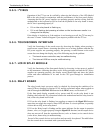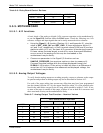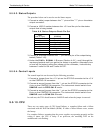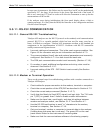
Troubleshooting & Service Model T101 Instruction Manual
224
Dilution air contains sample or span gas.
Sample inlet may be contaminated with H
2
S exhaust from this or other
analyzers. Verify proper venting of the pump exhaust.
Span gas overflow is not properly vented and creates a back-pressure on
the sample inlet port. Also, if the span gas is not vented at all and does
not supply enough sample gas, the analyzer may be evacuating the
sample line. Make sure to create and properly vent excess span gas.
If the instrument is equipped with an intern IZS valve option and the H
2
S
span value is continuously trending downward, the IZS permeation tube
may require replacement
9.3.7. DISCREPANCY BETWEEN ANALOG OUTPUT AND DISPLAY
If the concentration reported through the analog outputs does not agree with the value
reported on the front panel, you may need to re-calibrate the analog outputs. This
becomes more likely when using a low concentration or low analog output range.
Analog outputs running at 0.1 V full scale should always be calibrated manually. See
Section 4.6.3.3. for a detailed description of this proc
edure.
9.4. OTHER PERFORMANCE PROBLEMS
Dynamic problems (i.e. problems which only manifest themselves when the analyzer is
monitoring sample gas) can be the most difficult and time consuming to isolate and
resolve. The following section provides an itemized list of the most common dynamic
problems with recommended troubleshooting checks and corrective actions.
9.4.1. EXCESSIVE NOISE
Excessive noise levels under normal operation usually indicate leaks in the sample
supply or the analyzer itself. Make sure that the sample or span gas supply is leak-free
and carry out a detailed leak check as described earlier in this chapter.
Another possibility of excessive signal noise may be the preamplifier board, the high
voltage power supply and/or the PMT detector itself. Contact the factory on trouble-
shooting these components.
9.4.2. SLOW RESPONSE
If the analyzer starts responding too slowly to any changes in sample, zero or span gas,
check for the following:
Dirty or plugged sample filter or sample lines.
Sample inlet line is too long.
Dirty or plugged critical flow orifices. Check flows (Section 9.5.2),
pressures (Section 9.5.1) and, if necessary, chan
ge the critical flow
orifice (Section 8.3.7).
Wrong materials in contact with sampl
e - use Teflon materials only.
Sample vent line is located too far from the instrument sample inlet and
causes long mixing and purge times. Locate sample inlet (overflow) vent
as close as possible to the analyzer’s sample inlet port.
07266B DCN6485



